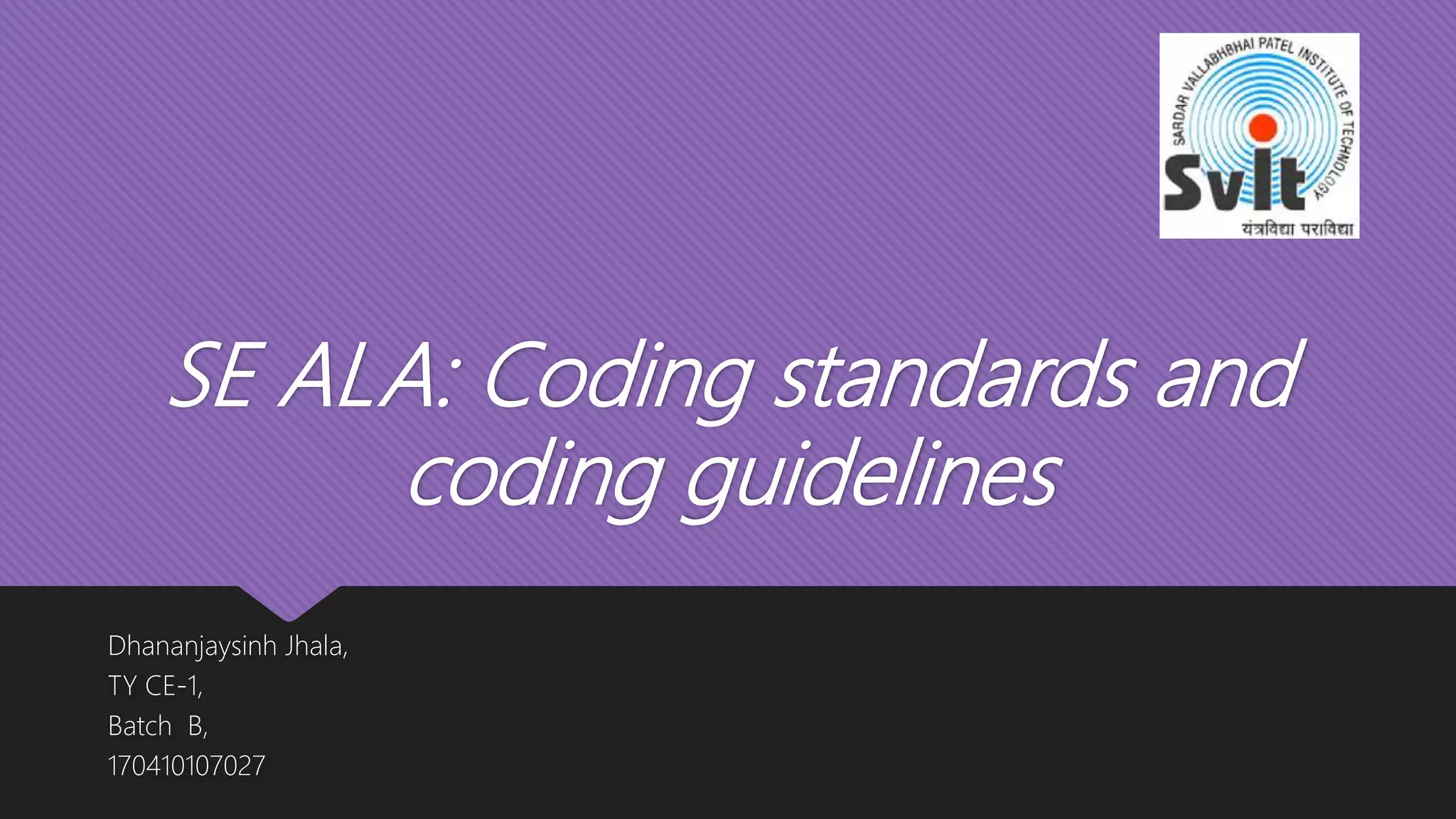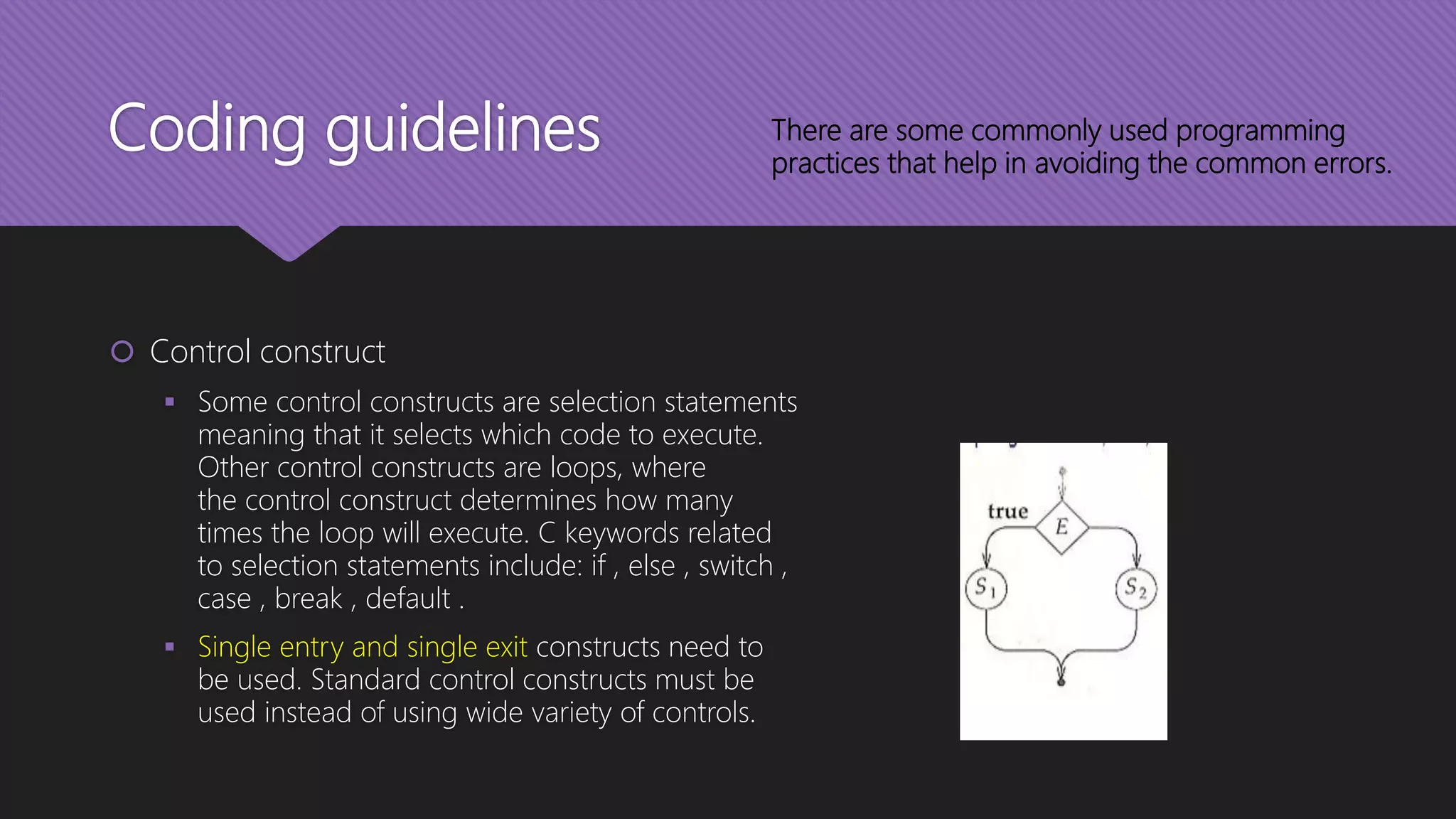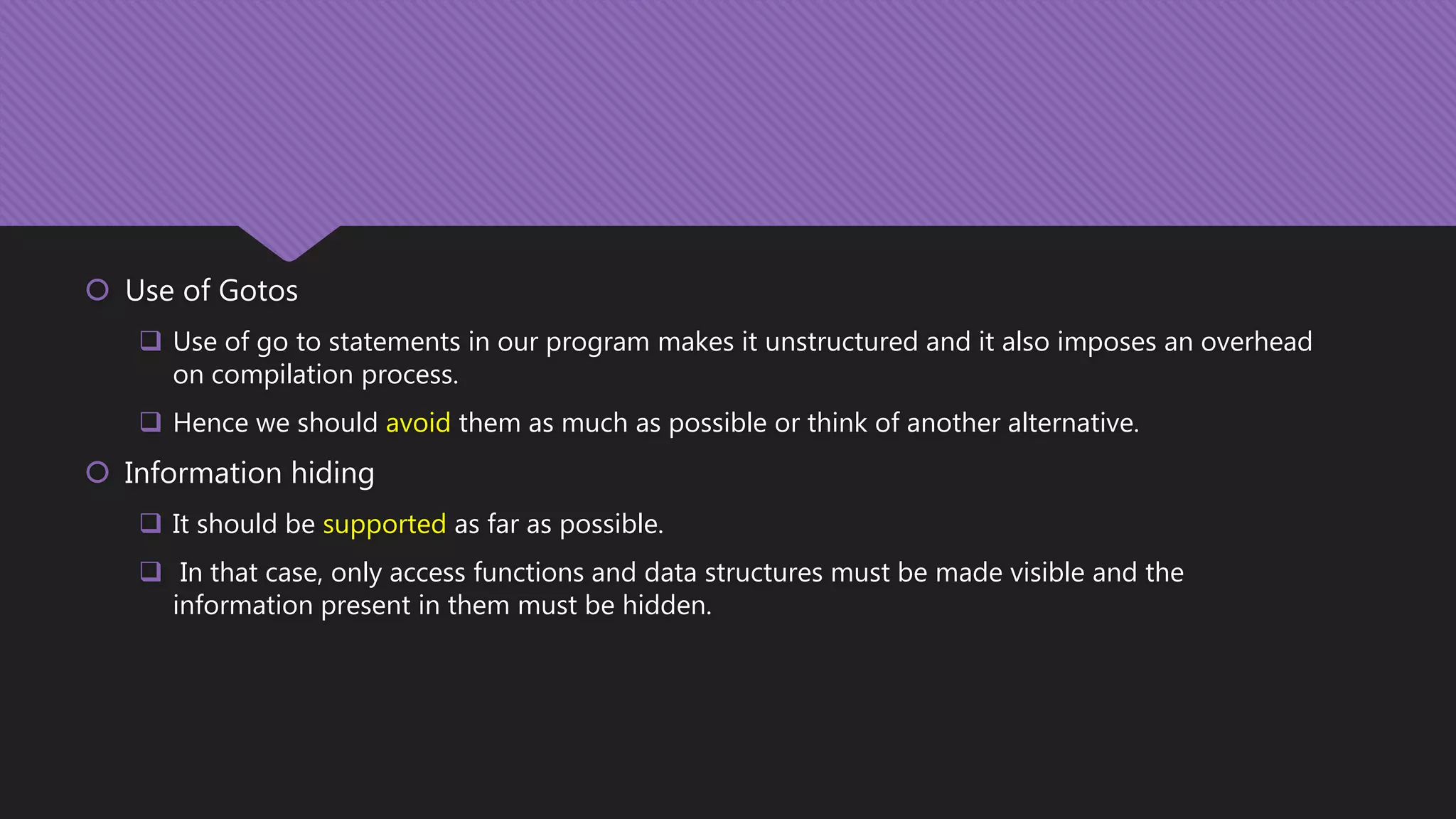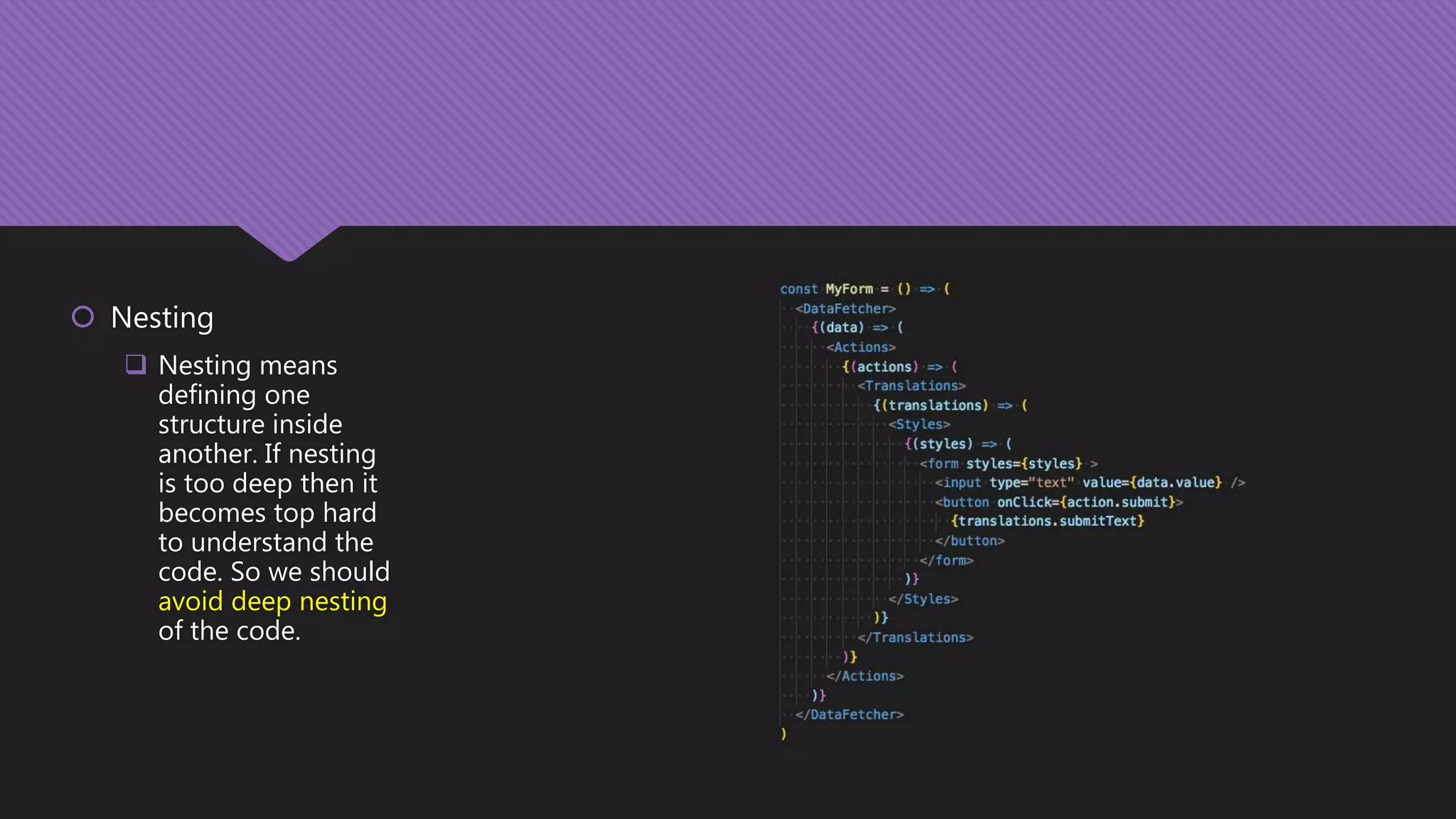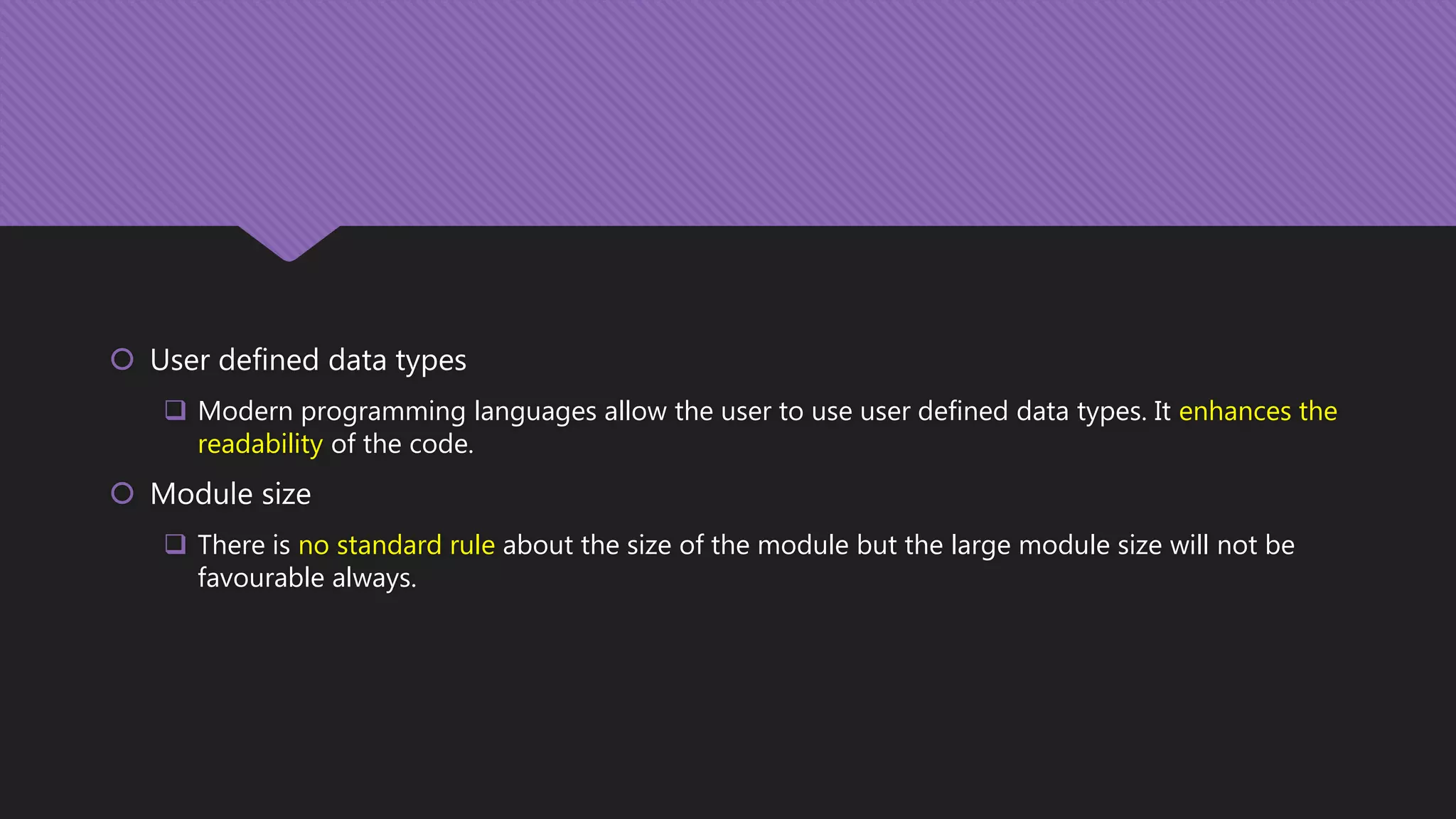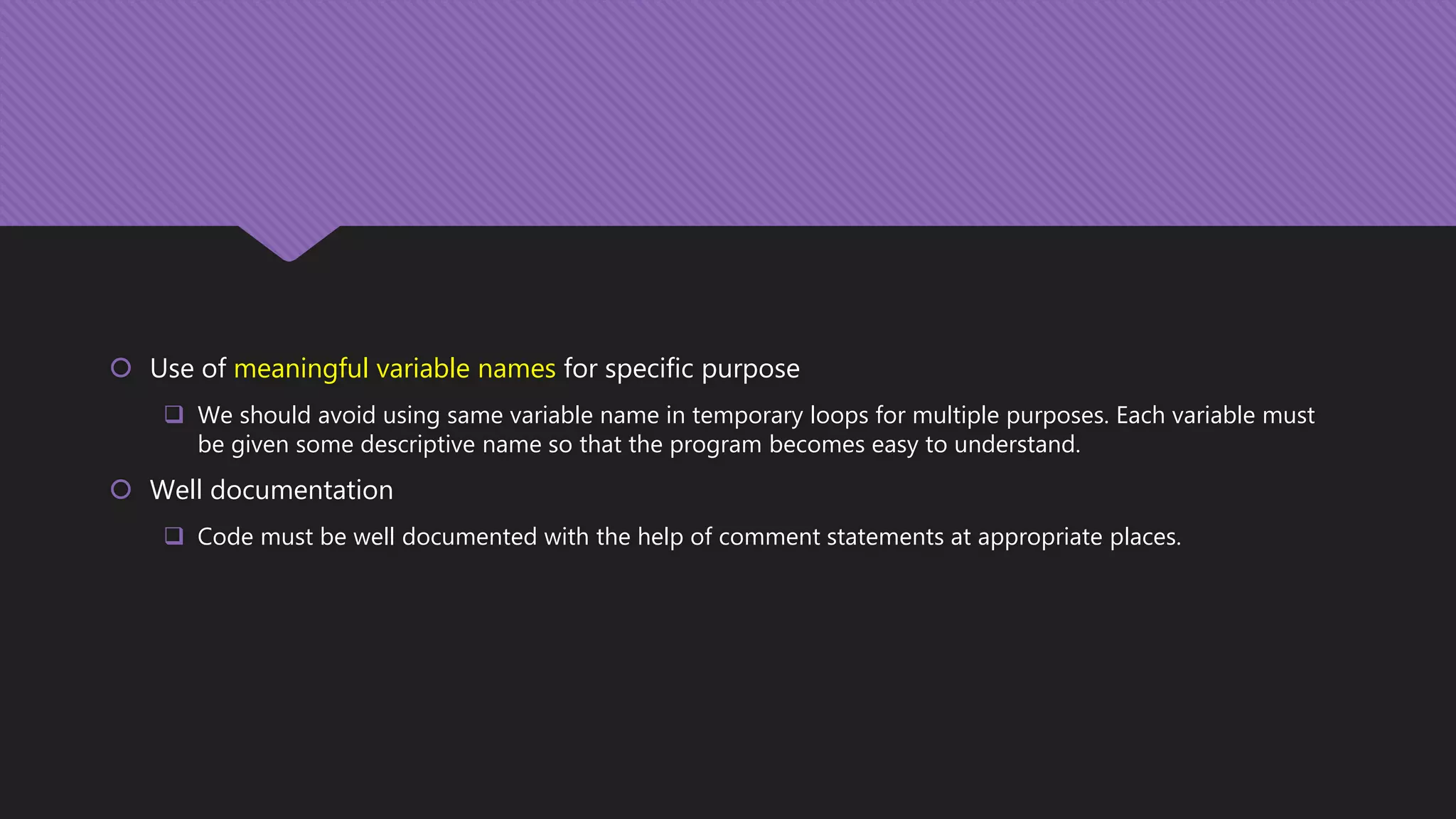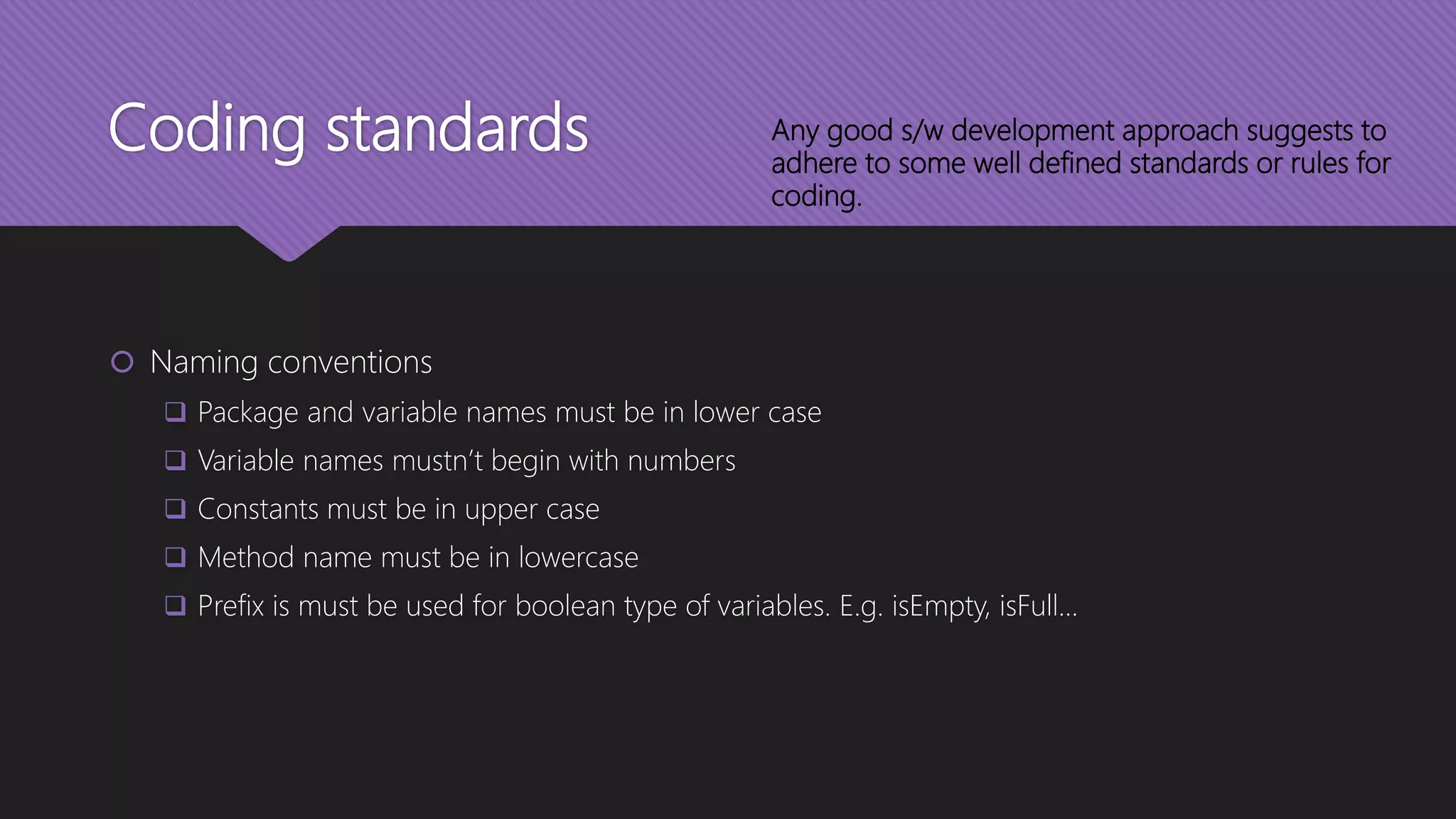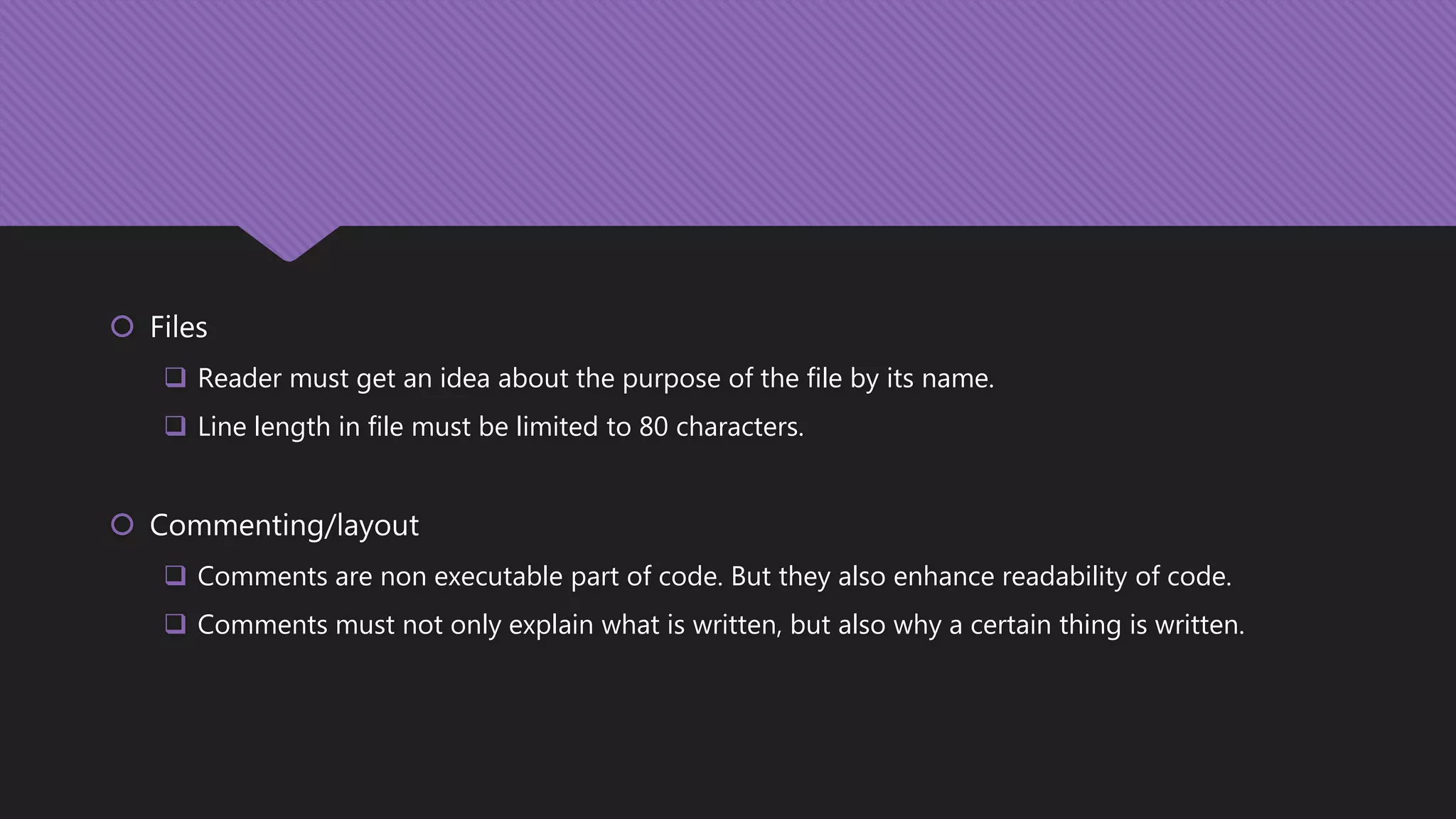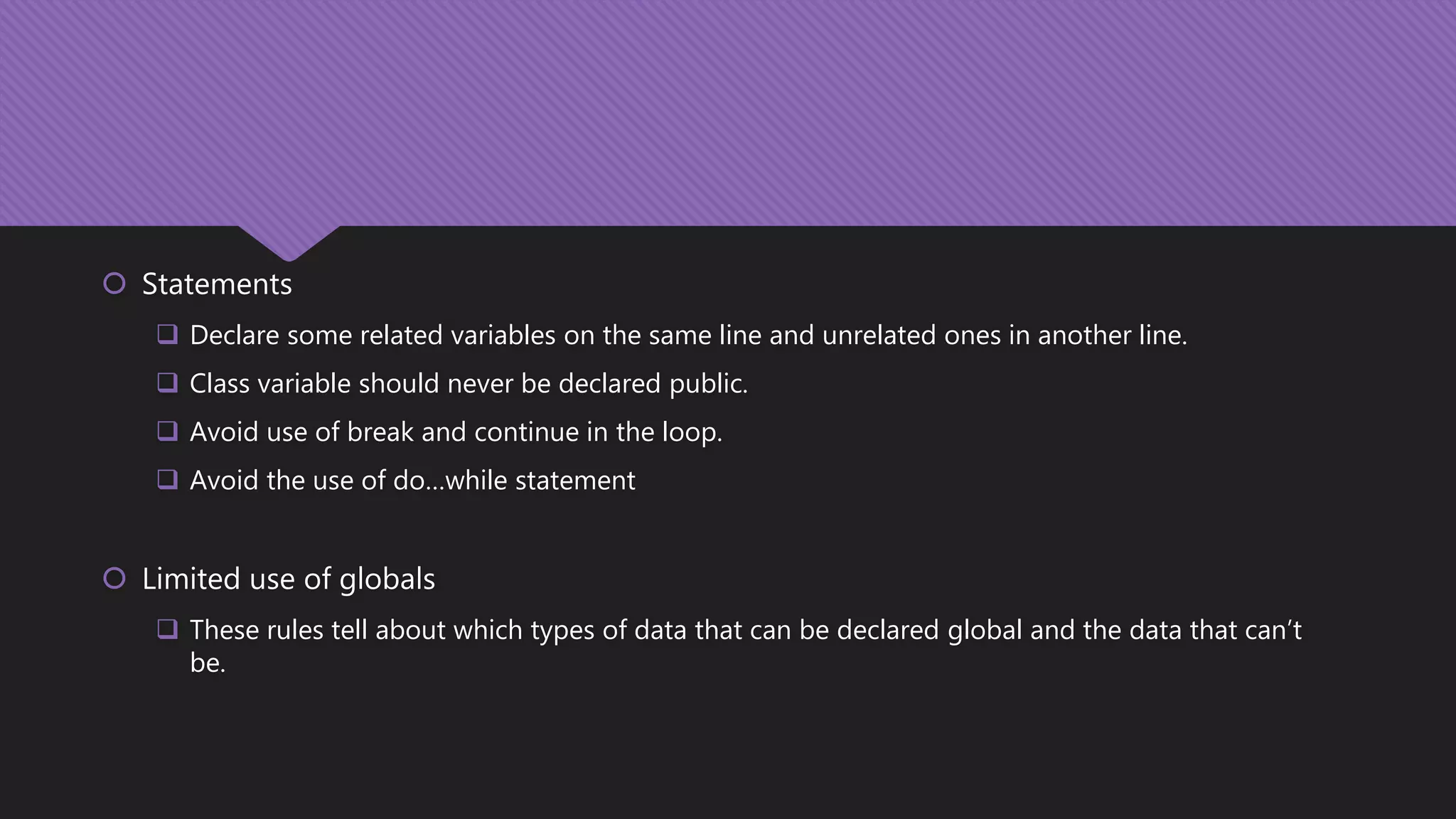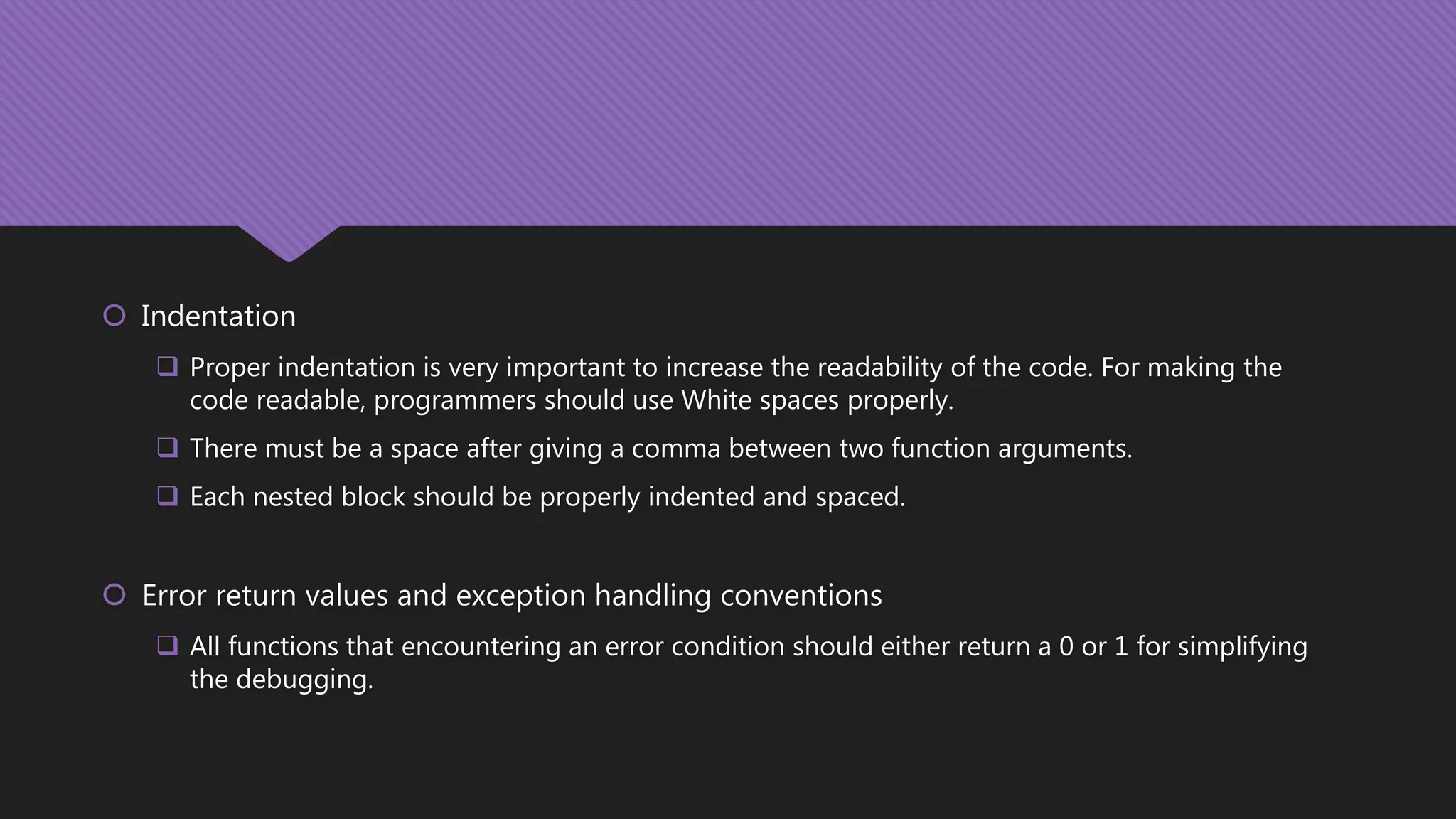The document outlines coding standards and guidelines aimed at improving code clarity and maintainability, emphasizing structured control constructs, avoidance of 'goto' statements, and the importance of information hiding. It details naming conventions, module size considerations, and the necessity of well-documented code and proper indentation. Additional highlights include the proper use of variable names, comments, and error handling practices to enhance overall code quality.
